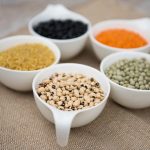When is a low-carb diet not just a low-carb diet? When the diet has a different name. With the popularity of low-carb living for purported weight loss and health benefits, many people are turning to the diet in all its various forms.
Kelly Schmidt, a nutrition consultant based in Columbus, Ohio, states that most Americans consume more than 200 grams of carbohydrates per day. Therefore, any diet which features a lower intake of carbohydrates than this can be considered a low-carb diet.
A low-carbohydrate diets have grown in popularity in recent years. Low-carbohydrate diets are high in fat and protein and low in carbohydrates.
A low-carb diet is a diet that restricts the consumption of carbohydrates. There are two main types of low-carb diets: the Ketogenic diet and the South Beach diet. The ketogenic diet focuses on high-fat foods, while the South Beach diet focuses on high-protein foods. Both diets vary in the amount of recommended carbs.
Below are the different types of low-carb diets.
1. A Basic Low-Carb Diet
There is no official guideline that defines a low-carb diet, consuming about 50 to 100 g of carbs a day is considered a basic low-carb diet. This amount can vary depending on your activity level and whether you’re trying to maintain your weight or create weight loss.
This means that you will be eating fewer carbs than you are used to, but the amount you eat will be based on what your body needs. A basic low-carb diet also allows you to choose which carbs you want to include, rather than dictating what you need to eat and when. You can choose from options like fruits, vegetables, dairy, whole grains, nuts, legumes, and seeds. If you want the freedom to eat what you want and don’t want to have to count carbs, then this plan is for you. There may be benefits to following this traditional plan.
A recent study found that a moderate-carb diet improved some aspects of metabolic syndrome more than a high- or low-carb diet. The study was published in June 2019 in the journal JCI Insight and looked at obese adults who had metabolic syndrome. The low-carb group saw improvements in their triglycerides, HDL cholesterol, and LDL cholesterol, regardless of whether they lost weight or not.
2. The Keto Diet
The keto diet is a high fat, low carb diet that causes your body to burn fat for energy instead of carbs. People often see quick weight loss results with this diet, which can be motivating.
The negative aspect is that it is a restrictive diet – you are consuming mostly fat sources, some protein, and non starchy vegetables. This makes it hard to sustain, and it is typically meant as a temporary diet instead of a long-term change.
A review conducted in December 2018 found that keto diets can lead to slightly more weight loss than a low-fat diet. However, these results are not likely to last over a long period of time. After five months, people who follow the keto diet begin to regain the weight they lost.
3. A Low-Carb, High-Fat Diet
On this diet plan, you eat more carbs than you would on the keto diet, and less fat. This is because your body is not in the fat-burning state of ketosis like it is on the keto diet.
Most of your calories (about 60 percent) come from fat, while carbs make up around 25 percent.
The good news is that it is possible to stick to the keto diet if a more liberal carb allotment (100 to 150 g of carbs a day) is permitted.
While low-carb, high-fat diets can help people lose weight, there is not enough research to know if there are any long-term health benefits or risks.
Many people do this type of low-carb diet to improve their performance during a workout.
Some people say that the keto diet can help train your body to use fat for fuel, which could provide more energy during long endurance activities.
If you’re an athlete who is interested in this type of diet, you should consult with a registered dietitian who specializes in sports nutrition to see what would work best for you.
4. The Atkins Diet
The low-carb craze began with the Atkins diet. Dr. Atkins saw early on that cutting back on carbs and allowing unlimited protein and fat had a big impact on appetite and insulin levels. The plan starts with a keto diet and then slowly introduces carbs back into the diet.
One common error people make when trying to lose weight is adding back in too many carbs. For instance, when you’re in maintenance mode, you shouldn’t be eating bread.
This diet also includes processed foods, which are not as healthy as whole foods. Therefore, it is best to stick to eating whole foods.
This diet may be more effective than other diets in the short term.
An analysis of 59 trials on various diets published in the Journal of the American Medical Association in September 2014 found that people following the Atkins diet lost an average of 22 pounds after six months.
This diet is different from the Eco-Atkins diet, which was ranked 22 out of 40 in the 2018 US News & World Report Best Diets, but did not rank in 2020.
The focus of this diet is on plant-based proteins and unsaturated fats, with a greater carb allowance. Most animal products and saturated fats will likely be eliminated.
5. Low-Carb Paleo
The caveman diet is a high-fat, low-carbohydrate diet.
You can eat a variety of meats, vegetables, fruits, seeds, and nuts on a paleo diet, which helps reduce your risk of heart disease, cancer, and other chronic illnesses. A paleo diet contains a variety of carbs, ranging from keto to normal carb levels. The benefit of a paleo diet is that it emphasizes whole, unprocessed foods. You can eat a variety of meats, vegetables, fruits, seeds, and nuts on a paleo diet, which helps reduce your risk of heart disease, cancer, and other chronic illnesses.
Although cutting out grains, legumes, beans, sweets, and dairy can make a diet seem automatically low carb, it’s important to be aware that starchy vegetables and fruits can still be eaten, and these can contribute to a higher carbohydrate intake.
A more plant-based diet can make a low-carb diet heavy on meat. To stay focused on carb-friendly vegetables, eat cucumbers, tomatoes, zucchini, and peppers.
There have been few studies on the paleo diet as a whole, and it is not clear how effective a low-carb version would be. The paleo diet may be helpful in reducing weight, belly fat, and blood pressure and lipid levels, according to preliminary studies.
6. Eco-Atkins Diet
The Eco-Atkins diet, created in 2009, is a vegetarian version of the Atkins diet that is high in fat.
The purpose of the Eco-Atkins Diet is to lose weight and lower LDL cholesterol by consuming vegetarian protein sources in a way that is similar to the Atkins Diet. Individuals who follow this diet typically get 43% of their daily calories from fat, 31% from protein, and 26% from carbs.
The Eco-Atkins diet is similar to the Atkins 20 or 40 diet in that it is divided into phases. However, since many plant-based proteins also contain carbohydrates, the first (and most restrictive) phase of Atkins is not possible to follow, resulting in only three phases.
On Eco-Atkins, you would consume an average of 130 grams of carbs per day, which is quite high compared to other low-carb diets. Protein sources include nut bread, soybeans, veggie bacon, tofu, and nuts and seeds.
7. Bulletproof Diet
The Bulletproof diet was created by entrepreneur and blogger Dave Asprey in 2014. The diet is meant to help people lose weight, boost energy, increase physical and mental performance, increase nutrient stores, and strengthen immune function.
There are no restrictions on what you can eat on the Bulletproof Diet, although no studies have been conducted to confirm its effectiveness.
This diet recommends that you listen to your body’s cues and signals when it comes to hunger and food choices.
You shouldn’t worry about counting calories or weighing your food, even though the recommended macro guidelines suggest getting 50-70% of your calories from healthy fats, 20% from protein, and 25% from carbs from fruits and veggies.
The diet allows you to eat certain foods freely, eat other foods in moderation, and eliminates other foods.
- Green Zone foods: Meat, seafood, low-glycemic fruits and vegetables, and coconut.
- Yellow Zone foods: Nuts, seeds, corn, potatoes, and fruits with higher amounts of sugar.
- Red Zone foods: Soy, soft drinks, dried fruits, all cheese, vegetable oils, gluten, chickpeas, lentils, and chia seeds.
8. Dukan Diet
The Dukan diet is a high-protein, low-fat, low-carb diet created by Dr. Pierre Dukan in 1970. Dr. Dukan saw positive weight loss results in his patients and published the book “The Dukan Diet” in 2000.
The Dukan diet is a very restrictive diet, only allowing 100 foods in total. Of these, 68 come from proteins and 32 come from non-starchy vegetables. However, it is also considered effective for weight loss and preserving muscle mass.
The Dukan diet is similar to the Atkins diet in that it is divided into four phases. It also encourages light exercise and the consumption of oat bran each day.
Even when people are in the stabilization phase, they are only supposed to eat protein one day per week.
- The attack phase: Only foods from the 68 allowed proteins are consumed.
- The cruise phase: The 32 non-starchy vegetables are introduced.
- The consolidation phase: Starchy foods, whole grain bread, and cheese into your diet.
- The stabilization phase: There are no restricted food groups to help stabilize your weight.
9. Slow Carb Diet
The Slow Carb diet is a diet created in 2010 by Tim Ferriss. It is based on the belief that you can lose weight by eating slowly and deliberately. The diet has four main rules: eat only slow-carbohydrate foods, eat three meals a day, eat no more than two hours after your last meal, and eat protein at every meal.
The principle of the Minimum Effective Dose is that the smallest amount possible will have the greatest effect.
The diet promises that you will lose weight and body fat quickly, without having to count calories.
While there are no macro guidelines, followers are only allowed to eat from five food groups: protein, fats, legumes, veggies, and spices. The one dairy product allowed is cottage cheese, although critics say this has no scientific basis.
The slow carb diet is a dietary plan that is similar to the cyclical keto diet. It allows dieters to eat from the approved food groups six days per week, then eat freely on day seven. This type of diet may help some people lose weight and improve their overall health.
There are five rules in the diet:
- Avoid white carbs: This includes processed bread, pasta, and anything made with refined white flour.
- Eat the same meals repeatedly: This is supposed to eliminate the guesswork that could lead to indulgences.
- Don’t drink calories: Stick to water, with the occasional glass of red wine.
- Don’t eat fruit: This is suggested since fruit is believed to impede weight loss.
- Have a cheat day: Pick one day a week to eat the foods you normally couldn’t eat on this diet.
10. South Beach Diet
The three-step South Beach Diet plan was created by cardiologist Arthur Agatston and described in his 2003 book, “The South Beach Diet: The Delicious, Doctor-Designed, Foolproof Plan for Fast and Healthy Weight Loss.” This high-protein weight loss plan has gained popularity for its simple and effective approach.
The South Beach diet claims that you can lose 8-13 pounds in the first two weeks. The diet does not have any daily goals for macros or calories. Instead, the diet emphasizes consuming high-protein foods while restricting high-carb food choices.
You can eat three meals and two snacks a day while following an exercise plan. The diet is divided into three phases:
- Phase 1: Reset your body by eating plenty of high-protein, low-carb foods such as lean meat, poultry, fish, seafood, and soy.
- Phase 2: Slowly introduce healthy carbs from whole grains, legumes, low-sugar fruits, and non-starchy vegetables in hopes of losing 1–2 pounds per week.
- Phase 3: To maintain weight loss, all foods are permitted, but a heavy emphasis remains on protein.
Conclusion
Now that you are aware of the most commonly consumed low-carbohydrate diet plans, you may be wondering which one would be the best fit for you.
Look for a low-carb diet that is supported by science and offers a sustainable path to weight loss that doesn’t seem too restricting.









